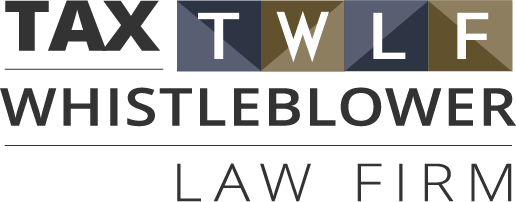Pfizer Inversion Derailed by New U.S. Treasury Regulations
/Pfizer Allergan inversion derailed by new regulations
The U.S. Treasury, in conjunction with the White House, released an update to their framework for Business Tax Reforms. According to the U.S. Treasury press release, these reforms are geared toward stopping U.S. corporations from inverting to more tax favorable jurisdictions and then utilizing earnings stripping to reduce taxable U.S. income.
As previously discussed in this blog, there are three ways a U.S. corporation can shift profits from the U.S. to an offshore tax favorable jurisdiction: 1) Transfer Pricing; 2) Inversion; and 3) earnings stripping.
2016 update vs. 2012 proposed business tax reforms: The White House and U.S. Treasury’s update outlines the following reforms:
- Minimum tax (≥19%) on foreign earnings in year the profits are earned;
- One-time tax on unrepatriated earnings at 14%;
- Restrict deductions for excessive interest to curb earnings stripping;
- Limit inversions by preventing firms form acquiring smaller foreign firms and changing their tax residence unless the change in tax residency in the new foreign jurisdiction has substantial economic activities and the operations in the foreign jurisdiction are more valuable than the U.S.
- Tighten rules for cross-border transfers of intangible property
- Close loopholes by expanding Subpart F rules.
These reforms are an update of the 2012 reforms suggested by the White House and Treasury.
Based on a comparison of the reforms, the 2016 reforms focuses more on the profit shifting/inversion/earnings stripping activities of large U.S. multinational corporations, and less on the incentives towards small business and clean energy. The latest reforms are in addition to 2014 and 2015 rules to limit inversion transactions and earnings stripping.
2015 Rule Changes: In Notice 2015-79, the US Treasury attacks inversions by imposing an 80% test and a substantial business test. The 80% test states that the shareholders of the U.S. company must receive less than 80% of the resulting inverted company. The substantial business test requires that the foreign company have substantial business activities in the jurisdiction in which it is incorporated. If both tests are met, then a third test, the 60% rule, would also prevent inversions. The 60% rule implies post inversion restrictions if the shareholders of the U.S. company receive 60% or more of the resulting company.
Notice 2015-79 also seeks to limit inversions by preventing the foreign company and U.S. company from setting up a new foreign holding company in a third unrelated jurisdiction which the U.S. company and foreign company would then be merged into the new foreign holding company. Notice 2015-79 restricts this third country inversion by disregarding the new foreign holding company.
Notice 2015-79 further limits inversions by taxing transfers of property (including intellectual property) or licensing of property from the U.S. company to its new foreign subsidiary or parent. Prior to this change, transfers of property and/or licenses of property were not taxable to the U.S. corporation. The new rule also has a similar provision for indirect transfers or licenses through partnerships by the U.S. company.
Finally Notice 2015-79 prevents certain shifting of former Controlled Foreign Corporation (“CFCs”) of the U.S. company without incurring taxation.
2014 Rule Changes: In Notice 2014-52, the U.S. Treasury imposed restrictions to inversions. The 2014 Notice imposes new penalties for violating the 60% test in addition to 80% test (the existing prohibition of ownership of 80% of the new company by the shareholders of U.S. company). Notice 2014-52 also restricts the transfer of assets between the U.S. company and the Foreign Company to meet the 60% and 80% tests.
Notice 2014-52 also limits the inverted company from utilizing cash of a CFC of the U.S. company without incurring tax. Prior to the rule changes, the cash trapped in the CFC of the U.S. company could be loaned to the new inverted foreign company or any subsidiary of the new inverted foreign company without incurring tax. With the rule changes, the trapped cash loaned to any inverted foreign company or subsidiary foreign company will be treated as a dividend to the U.S. company, regardless of whether the cash is ultimately used in the U.S.
Notice 2014-52 does not address earnings stripping, but merely notifies the public that additional rules may be adopted in the future.
Conclusion: Together the new Treasury rules contained in Notice 2014-52, Notice 2015-79 and the 2016 reform updates (when enacted) appear to provide the antidote to the recent rash of U.S. multinational corporations inverting to more favorable tax jurisdictions. Whether these changes are an effective approach to address inversions and earning stripping will depend on whether U.S. companies now have a disincentive to invert and strip the U.S. entities of its future earnings.
Apparently, the changes have already blocked one previously announced inversion between Pfizer and Allergan. According to Forbes, the recent merger cancellation has also impacted the stock of both companies.
What is noteworthy is that the U.S. Treasury has not attacked transfer pricing in the bulk of its 2014, 2015 and 2016 rule changes. Does this mean the U.S. Treasury is leaving the battle of transfer pricing to the IRS with its cases against Microsoft, Amazon, Zimmer and Medtronic?
If you have specific/credible information about corporations avoiding the payment of tax through transfer pricing, inversions and earnings stripping, you can get involved in preventing/limiting the tax avoidance by filing an IRS tax whistleblower claim. The IRS pays an award between 15% to 30% of the tax collected to a whistleblower with specific and credible information about a corporate taxpayer’s avoidance of tax (through transfer pricing, inversions and earnings stripping). Contact us if you want to file a tax whistleblower claim.




